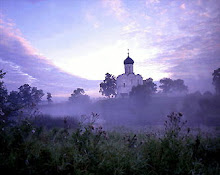
If you had to be in the Army, there couldn't have been many better places to be stationed than the Presidio of Monterey, California. It's changed a lot since the late 1960's. But when I went there for the first time at age 19, never having been west of St. Louis, it felt exotic. I loved the salt air, the iceplant, Fisherman's Wharf, Pacific Grove and the bay, and old downtown Monterey. Monterey has since gone considerably upscale. In the 1960's remnants of John Steinbeck's Cannery Row were still visible. Today Cannery Row is a tourist mall, with a focus on the wonderful Aquarium (or here).
I went there to attend the school at the Defense Language Institute, West Coast (DLIWC) to study Russian for 9 months. It is now called the Defense Language Institute, Foreign Language Center (DLIFLC) and is only one "tenant" of the Presidio. We were also waiting for our security clearances to come through. We didn't really know what that meant yet, but in the course of time we were cleared for SIGINT.
We studied Russian 5 days a week, 6 hours a day. And we had homework, mostly in the form of dialogs that we had to learn so we could speak them to one another the next day. We weren't supposed to actually memorize them, but I did, since it was the only way I could get through them. I got pretty good at it: I could memorize a couple of legal-size sheets of Russian dialog—both sides—over a cup of coffee before class.
We didn't do much writing. Our goal was to learn to listen to Russian enough to understand it (more about that later, too). In the process, we also learned to speak it.
Our instructors were Russian immigrants who had left Russia (or the Soviet Union) mostly before WWII, so most were elderly by the time we got to know them. And they were a fascinating bunch of people. There was "Shakey Jake," who must have been suffering from some form of Parkinson's in addition to advanced age. And there was Mme. Chebyshova, a very funny lady. There were a couple of poets among them; I have a couple of slim volumes by one of them who wrote under a pseudonym. General Rastikis was actually Lithuanian, a short, stocky little guy with a stiff, military bearing, who had to deal with Stalin when his country, along with the other Baltic states, was absorbed into the Soviet Union in 1940. All of them were pleasant and tolerant of our youthful antics and unmilitary behaviors, probably more tolerant than the Army appreciated.
Those of us deemed good enough with Russian could apply to live in the "Russian Barracks," also known as "B5," the designation of the building on the lower DLI campus. These were WWII-style wooden barracks; our classrooms were the same structures, but modified for classroom use. Toward the end of my stay in Monterey a whole new collection of buildings on the top of the hill were completed for housing and classrooms. I attended only a very few classes up there in the new buildings. The old buildings on the lower campus (including the NCO club and all the other facilities) were eventually torn down. I have visited Monterey a few times since and, while the Presidio looks similar from the outside, it is quite different. Until 9/11/2001 there were a couple of town roads that crossed the Presidio, which was pretty much open to anyone. After 9/11, the Presidio, as a military installation, was locked down, and guards stationed at the gates.
The basic Russian language course was 9 months long. During that time the Army decided to experiment with an advanced course for another 9 months, to see if the additional training improved effectiveness in the field. The first class to get the second course had only 9 students; at DLI the student-to-instructor ratio was 9-to-1, so they had only one class. They decided then to take the best from two introductory classes to form another advanced course for 27 students. I just barely made it to the second course; one of my instructors warned me that I might not make it unless I worked harder, so I did, one of the few occasions that I have accepted a teacher's advice, and it worked.
Following a short leave, I returned to Monterey for the second course. It was really just more of the same, but we felt special in some ways. We were on more intimate terms with our instructors, and we already had 9 months of experience in Monterey, Carmel, San Francisco and all the other delights of California. Plus, we had been promoted to Specialist 4th Class (E-4), so we outranked most of the other enlisted men at the school.
Next: The 27



 Atom
Atom
0 comments:
Post a Comment